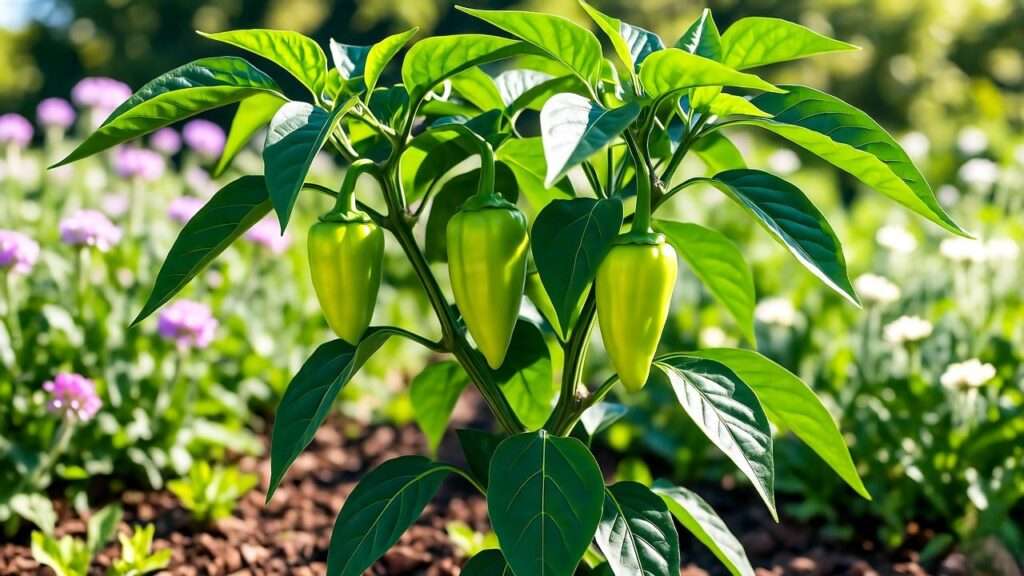Imagine stepping into your garden to pluck vibrant, spicy hot banana peppers straight from the plant, ready to elevate your salsas, sandwiches, or pickles with a tangy kick! 🌞 Whether you’re a novice gardener or a seasoned grower, mastering the art of growing a hot banana pepper plant can transform your backyard into a flavor-packed paradise. These versatile peppers, known for their mild to moderate heat and stunning colors, are easier to grow than you might think. In this comprehensive guide, we’ll share seven expert tips to ensure your hot banana pepper plant thrives, addressing common challenges and helping you achieve a bountiful harvest. From soil prep to pest control, let’s dive into the essentials of pepper gardening success! 🎉
1. Understanding the Hot Banana Pepper Plant 🌶️
What Makes Hot Banana Peppers Unique? ✨
Hot banana peppers, scientifically known as Capsicum annuum, are a gardener’s delight due to their vibrant appearance and culinary versatility. These elongated peppers, typically 6–8 inches long, transition from green to bright yellow, orange, or red as they ripen. With a Scoville heat rating of 500–5,000 units, they offer a mild to moderate kick, making them perfect for pickling, grilling, or adding to fresh dishes like salads and salsas. Their glossy texture and tangy flavor have made them a staple in home gardens and kitchens worldwide. Historically, banana peppers originated in South America and gained popularity in Hungarian and Italian cuisines, earning names like “Hungarian Wax” or “Banana Chili.”
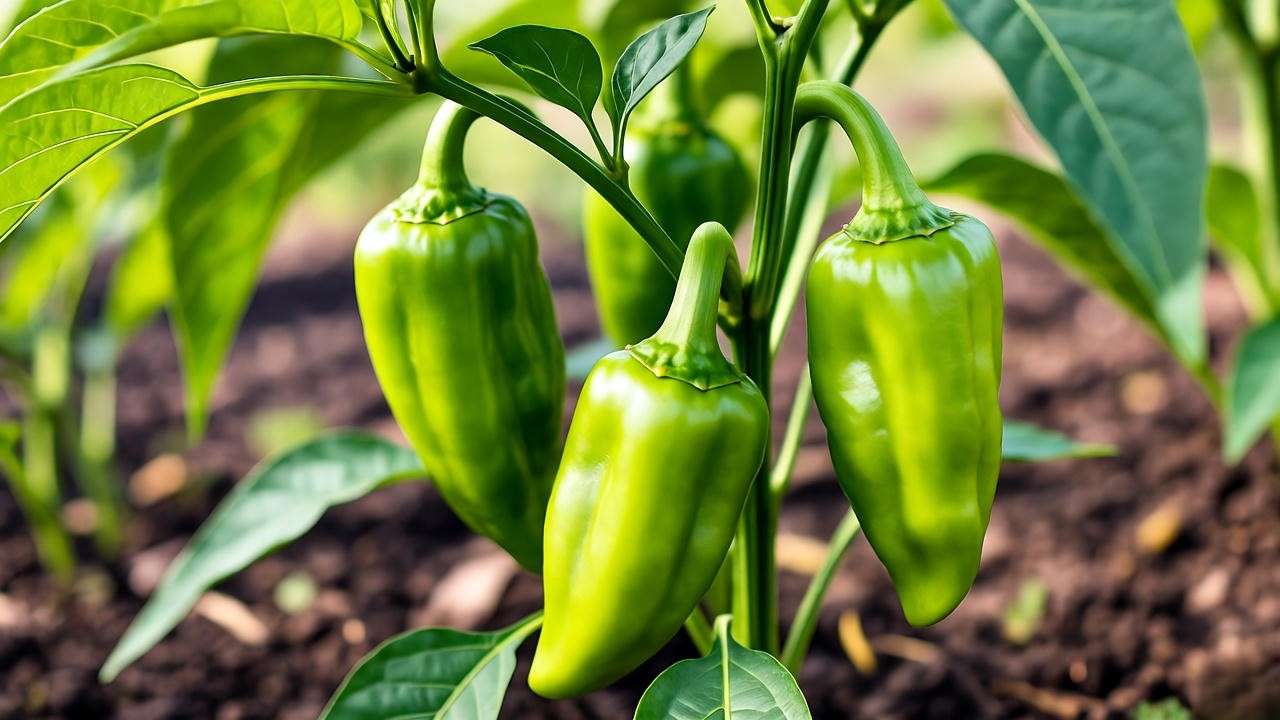
Choosing the Right Variety for Your Garden 🪴
Not all hot banana peppers are created equal! Popular varieties include ‘Hungarian Wax’ (spicier, great for pickling), ‘Sweet Banana’ (milder, ideal for fresh eating), and ‘Inferno’ (bold heat for spice lovers). When selecting a variety, consider your climate, garden space, and culinary preferences. For warmer regions, ‘Hungarian Wax’ thrives, while ‘Sweet Banana’ suits cooler climates. Check seed packets or nursery labels for details on heat levels and growth habits. For small spaces, compact varieties or container-friendly options work best. Pro tip: Always source seeds or seedlings from reputable suppliers to ensure quality and disease resistance.
2. Preparing for Planting Success 🌍
Ideal Growing Conditions for Hot Banana Peppers ☀️
Hot banana pepper plants crave warmth, sunlight, and well-draining soil to flourish. Aim for daytime temperatures between 70–85°F and at least 6–8 hours of direct sunlight daily. The soil should have a pH of 6.0–6.8, which you can test using a home kit from your local garden center. Enrich the soil with organic matter like compost or aged manure to boost fertility. According to the University of Maryland Extension, peppers thrive in loamy soil with good drainage to prevent root rot. If your soil is heavy clay or sandy, amend it with organic compost to improve texture and nutrient retention.
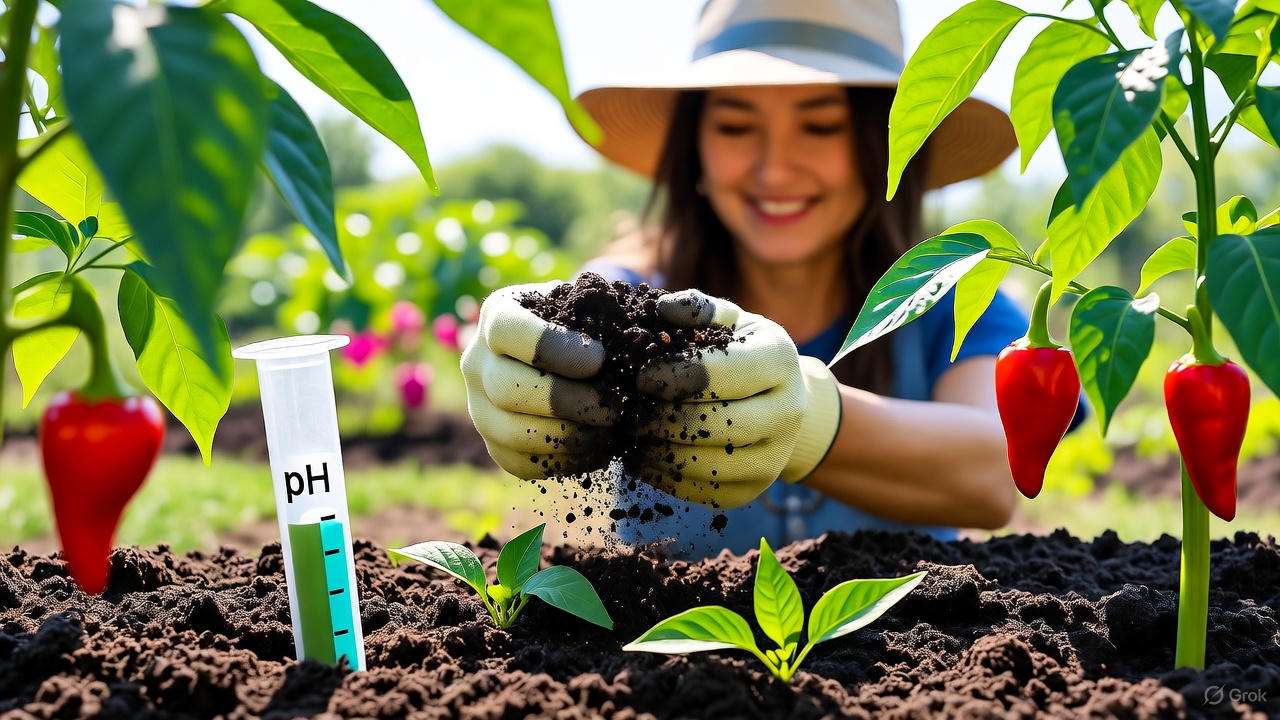
When and Where to Plant 🌱
Timing is critical for hot banana peppers. Plant after the last frost date in your region—typically mid to late spring in most areas (e.g., April or May in USDA zones 5–9). Use a frost date calculator from sources like the Old Farmer’s Almanac to pinpoint the ideal time. Choose a sunny, sheltered spot in your garden to protect plants from strong winds. For urban gardeners or those with limited space, container gardening is a fantastic option—just ensure pots have drainage holes. Space plants 18–24 inches apart to promote airflow and reduce disease risk. This spacing also allows roots to spread, supporting vigorous growth.
3. Planting Your Hot Banana Pepper Plant 🌿
Starting from Seeds vs. Transplants 🌱
You can grow hot banana peppers from seeds or transplants, depending on your timeline and experience level. Seeds: Start indoors 8–10 weeks before the last frost. Sow seeds ¼ inch deep in seed trays filled with a seed-starting mix. Maintain soil temperatures of 75–85°F using a heat mat to encourage germination, which typically takes 7–14 days. Keep soil moist but not soggy, and provide 16 hours of light daily using grow lights. Transplants: Purchase healthy seedlings from a nursery, looking for sturdy stems and vibrant leaves without yellowing or spots. To transplant, dig a hole slightly larger than the root ball, place the seedling, and firm the soil gently. Water thoroughly after planting to settle roots.
Container Gardening for Hot Banana Peppers 🪣
Container gardening is perfect for patios, balconies, or small yards. Choose a pot at least 5 gallons in size (12–14 inches in diameter) to accommodate the plant’s mature root system. Use a well-draining potting mix with added perlite or vermiculite for aeration. Containers allow you to move plants to sunnier spots or indoors during unexpected cold snaps, making them ideal for unpredictable climates. Ensure pots have drainage holes to prevent waterlogging. For added flair, group pepper pots with herbs like basil or oregano, which complement their growth and deter pests.
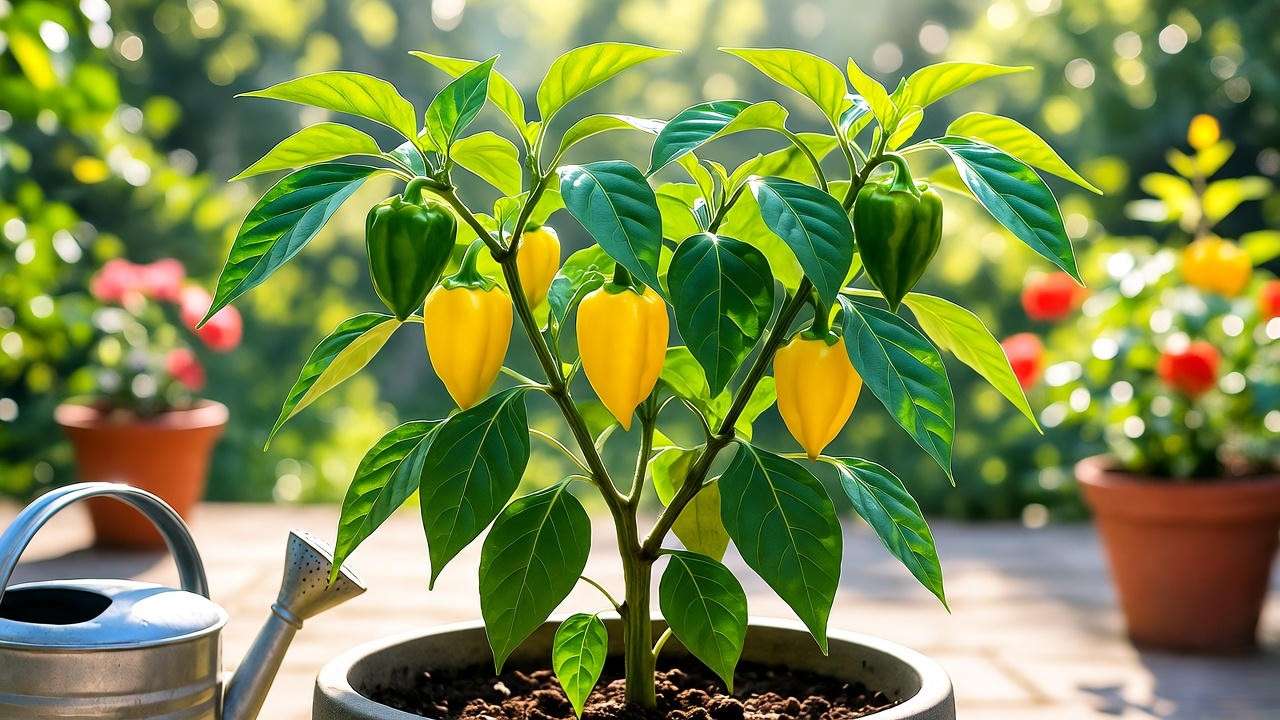
4. Watering and Feeding Your Pepper Plant 💧
Watering Best Practices 🚿
Hot banana pepper plants need consistent moisture to produce juicy, flavorful fruits. Provide 1–2 inches of water per week, adjusting based on rainfall and temperature. Water deeply at the base of the plant, avoiding foliage to prevent fungal issues. Drip irrigation or soaker hoses are ideal for even moisture distribution, as recommended by the University of California Agriculture and Natural Resources. Overwatering can lead to root rot, signaled by yellowing leaves, while underwatering causes wilting or small fruits. Check soil moisture with your finger—if the top inch is dry, it’s time to water.
Fertilizing for Maximum Growth 🌾
Peppers are heavy feeders, requiring a balanced nutrient supply. Early in the season, use a nitrogen-rich fertilizer (e.g., 10-5-5 or fish emulsion) to promote leafy growth. Once flowering begins, switch to a phosphorus- and potassium-rich formula (e.g., 5-10-10) to support fruit development. Apply fertilizer every two weeks during active growth, following package instructions to avoid over-fertilization, which can reduce fruit yield. Organic options like compost tea or worm castings are excellent for sustainable gardening. Taper off feeding as fruits mature to prevent excessive foliage at the expense of peppers.
5. Managing Pests and Diseases 🐛
Common Pests and How to Control Them 🕷️
Hot banana pepper plants can attract pests like aphids, spider mites, and pepper weevils. Aphids cluster on new growth, sucking sap and stunting plants. Combat them with a strong water spray or insecticidal soap. Spider mites, tiny web-spinning pests, thrive in dry conditions—apply neem oil and increase humidity to deter them. Pepper weevils bore into fruits, so inspect regularly and remove affected peppers. Companion planting with marigolds or garlic can repel pests naturally. Regular monitoring and maintaining plant health are key to prevention, as stressed plants are more vulnerable.
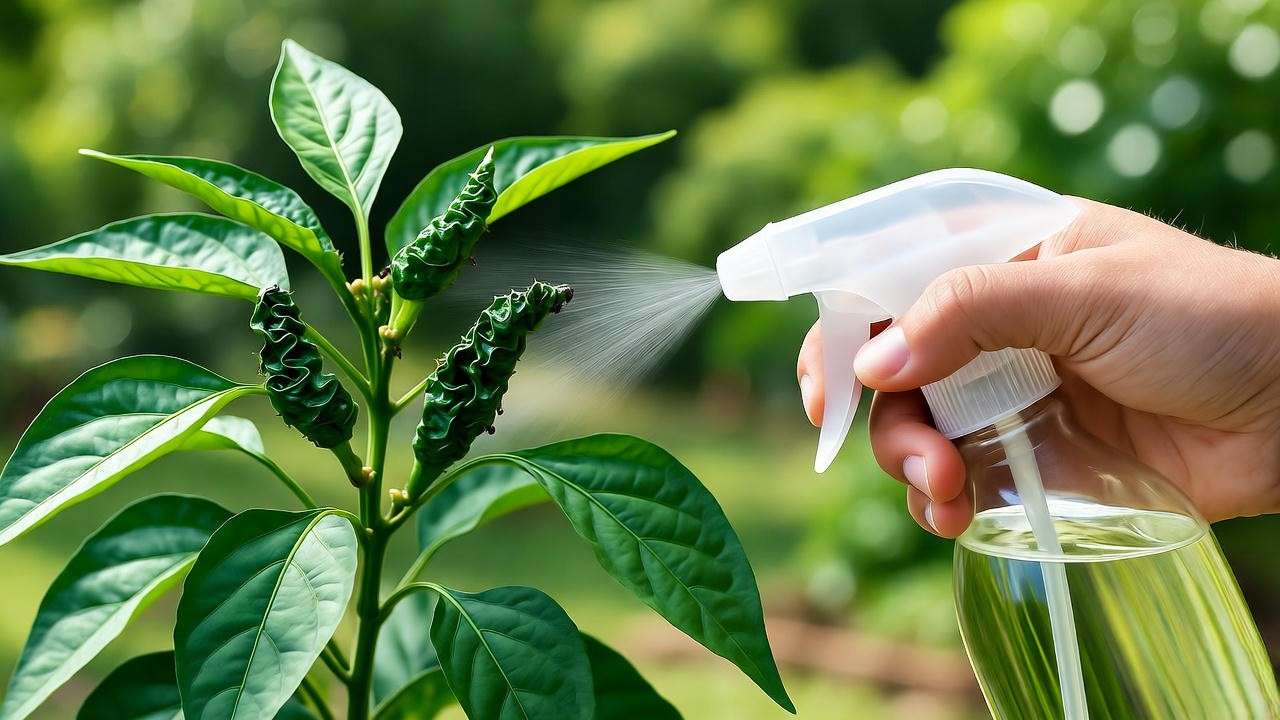
Tackling Diseases Like a Pro 🩺
Common diseases include blossom end rot, bacterial leaf spot, and powdery mildew. Blossom end rot appears as dark, sunken spots on fruit bases, caused by calcium deficiency or inconsistent watering. Correct it with calcium supplements (e.g., crushed eggshells) and steady moisture. Bacterial leaf spot shows as water-soaked spots on leaves; remove affected parts and avoid overhead watering. Powdery mildew, a white coating on leaves, can be treated with organic fungicides like sulfur. Choosing disease-resistant varieties and practicing crop rotation reduce risks. Always sanitize tools to prevent disease spread.
6. Pruning and Supporting Your Plant 🌳
Pruning for Health and Productivity ✂️
Pruning your hot banana pepper plant encourages bushier growth, improves airflow, and boosts fruit production. By removing unnecessary growth, you direct the plant’s energy toward developing flavorful peppers. Start by pinching off early flowers for the first 2–3 weeks after transplanting to promote stronger roots and stems. Once the plant is established, use clean, sharp pruning shears to remove suckers—small shoots growing between the main stem and branches. Also, trim any lower leaves touching the soil to prevent fungal diseases. Regular pruning keeps the plant compact and productive, especially for container-grown peppers. According to the University of Florida IFAS Extension, proper pruning can increase yields by up to 20%. Always sterilize tools with rubbing alcohol between cuts to avoid spreading pathogens.
Staking and Support Systems 🪵
Hot banana pepper plants can grow 2–3 feet tall and become top-heavy as they produce fruit. Without support, branches may snap under the weight of peppers. Use stakes, cages, or trellises to keep plants upright. Stakes: Insert a 3–4-foot wooden or metal stake 6 inches into the soil, 2–3 inches from the stem, and tie the plant loosely with soft twine. Cages: Tomato cages work well; place them around young plants to encircle growth. Trellises: Ideal for multiple plants in a row, providing a sturdy framework. Install supports early to avoid disturbing roots later. Check ties weekly to ensure they’re not too tight as the plant grows. This support ensures your peppers develop evenly and reduces the risk of pests hiding in fallen branches.
7. Harvesting and Storing Your Hot Banana Peppers 🎉
Knowing When to Harvest 🥗
Hot banana peppers are ready to harvest 60–75 days after transplanting, depending on the variety and desired ripeness. Pick them green for a milder flavor, or let them ripen to yellow, orange, or red for sweeter, spicier notes. Use garden scissors or pruners to snip peppers from the plant, leaving a short stem to avoid damaging the plant. Harvest in the morning when temperatures are cooler for the best flavor and texture, as suggested by the National Gardening Association. Regular harvesting encourages the plant to produce more fruit, so don’t let ripe peppers linger too long. If you notice slow fruit set, check for nutrient deficiencies or insufficient pollination.
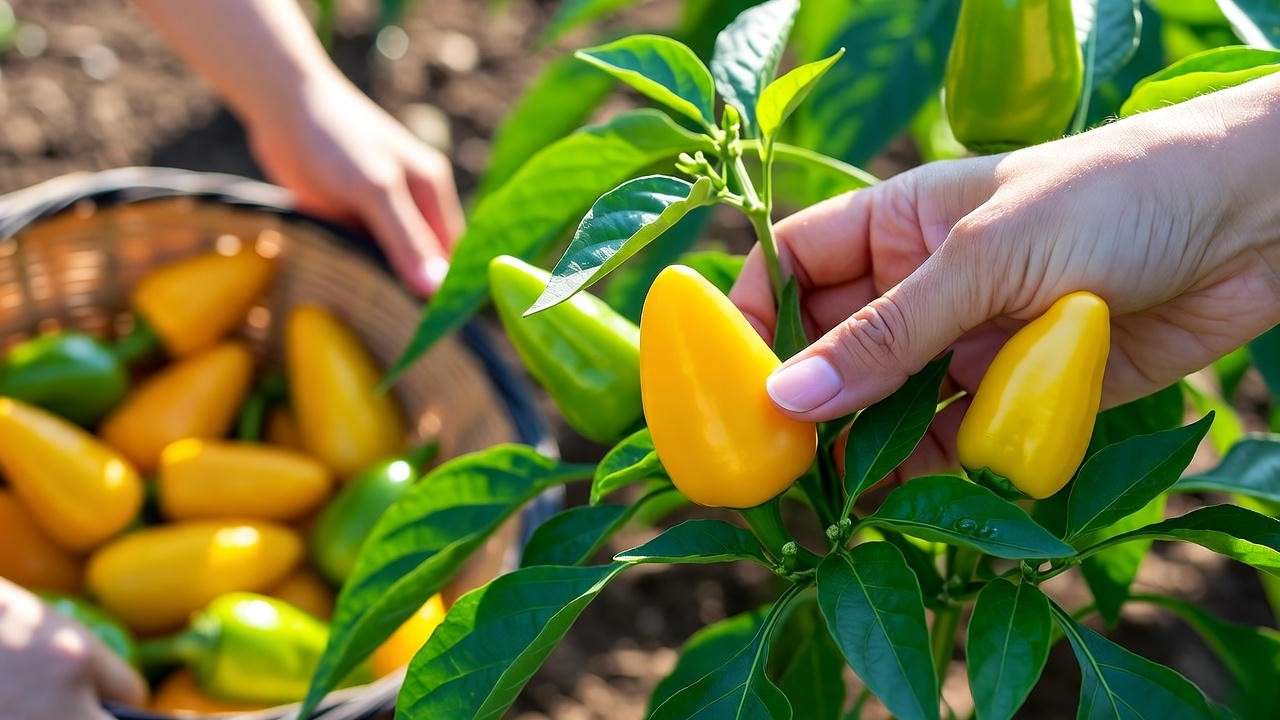
Storing and Preserving Your Harvest 🫙
Fresh hot banana peppers stay crisp in the refrigerator for up to 2 weeks when stored in a perforated plastic bag. For longer storage, try these methods:
- Freezing: Wash, dry, and slice peppers, then freeze in airtight bags for up to 6 months. Perfect for cooking or salsas.
- Pickling: Combine peppers with vinegar, water, salt, and spices (e.g., garlic, dill) for tangy pickled banana peppers. Store in sterilized jars for up to a year.
- Drying: Use a dehydrator or oven at low heat (135°F) to dry peppers, then grind into powder or store whole for up to 12 months.
Try this quick recipe: Mix pickled banana peppers with cream cheese for a zesty dip, or toss fresh slices into tacos for a spicy crunch. Proper storage preserves flavor and reduces waste, ensuring you enjoy your harvest year-round.
Bonus Section: Expert Tips and Tricks for Success 🌟
- Companion Planting: Pair hot banana peppers with basil, onions, or marigolds to repel pests like aphids and attract pollinators like bees. Avoid planting near fennel or kohlrabi, which may stunt growth.
- Troubleshooting Guide:
- Yellowing leaves: Often due to overwatering or nitrogen deficiency. Adjust watering and apply a balanced fertilizer.
- Poor fruit set: Could result from high temperatures (>90°F) or lack of pollinators. Hand-pollinate using a small brush or shake plants gently.
- Stunted growth: Check for compacted soil or root-bound containers; repot or loosen soil as needed.
- Seasonal Care Calendar:
- Spring: Start seeds indoors, prepare soil, and transplant after frost.
- Summer: Water consistently, fertilize biweekly, and monitor for pests.
- Fall: Harvest regularly and consider overwintering indoors in colder climates.
- Winter: Prune back and keep indoor plants in a sunny spot with reduced watering.
These tips, drawn from years of gardening experience and horticultural research, ensure your hot banana pepper plants thrive in any season.
FAQs About Growing Hot Banana Pepper Plants ❓
- How long does it take for a hot banana pepper plant to produce fruit?
Typically 60–75 days from transplanting, depending on variety and growing conditions. - Can I grow hot banana peppers indoors year-round?
Yes, with adequate light (grow lights for 12–16 hours daily), warmth (70–80°F), and a well-draining pot. - What’s the best way to increase the heat level of my peppers?
Stress plants slightly by reducing water during fruiting or choosing spicier varieties like ‘Inferno.’ - How do I overwinter my pepper plants for next season?
Prune back to 6–8 inches, repot indoors, and place in a sunny window with minimal watering. - Are hot banana peppers suitable for beginner gardeners?
Absolutely! They’re low-maintenance, forgiving, and perfect for learning basic gardening skills.
Conclusion: Grow Your Best Hot Banana Pepper Plant Yet! 🎊
Growing a thriving hot banana pepper plant is within your reach with these seven essential tips. From selecting the perfect variety to mastering watering, fertilizing, and pest control, you now have the tools to cultivate a healthy, productive plant. Whether you’re spicing up your meals or sharing your harvest with friends, the joy of homegrown peppers is unmatched. Start your gardening journey today, and don’t forget to share your success stories in the comments below! 🌶️ Want more plant care tips? Subscribe to our newsletter or explore our guides on companion planting and organic pest control. Happy gardening! 🪴

